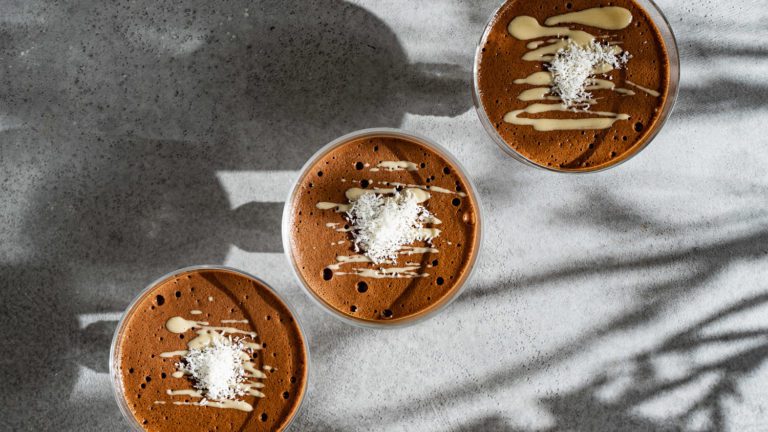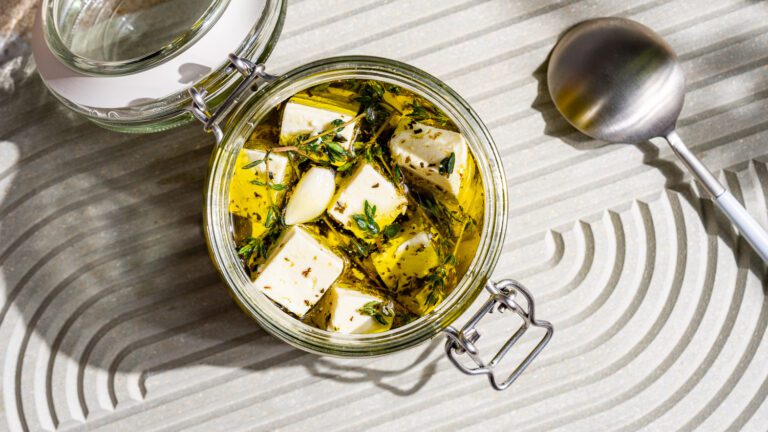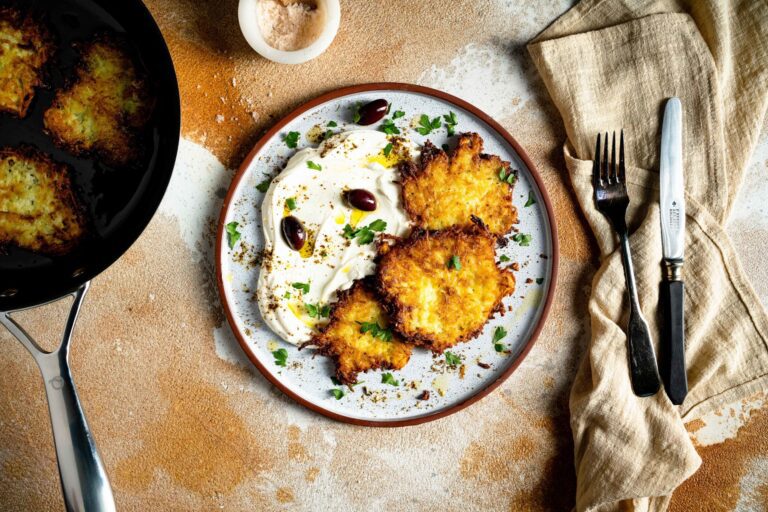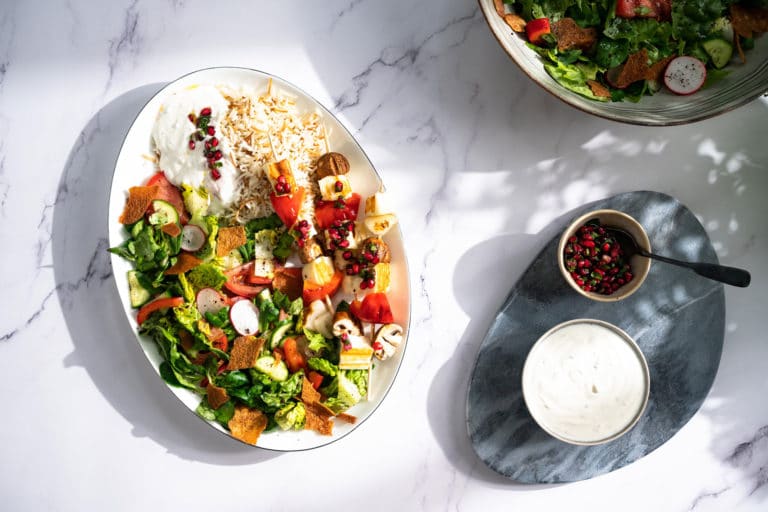Make falafel yourself: The authentic recipe!
I have a very personal relationship with falafel, the crispy balls made from chickpeas. They were part of my family’s integration when we came to Germany as refugees from Lebanon in 1984.
Back then, falafel was largely unknown outside the Levant. Fortunately, things are very different today and anyone can easily make falafel at home. Here I’ll show you how to do it properly. Now you can make the perfect falafel yourself!
What exactly are falafel?
Before we start: For all those who are not yet familiar with this incredibly tasty oriental specialty: Falafel are small crispy balls made from chickpeas, herbs and spices.
They are deep-fried and can be served plain, with sauce and pickled and fresh vegetables in a wrap or in a bowl.
Where do falafel come from?
Falafel has its origins in the Middle East. According to myth, falafel originated in North Africa. In Egypt to be precise.
There, the balls were served as a substitute for meat. Today, the crispy balls can be found everywhere as street food, especially in Lebanon, Syria, Israel and Palestine.
Personally, I was lucky enough to grow up with chickpea balls, so I know exactly what these little things must taste like.
And luckily you don’t have to go far. You can also easily make falafel balls at home.
The most important facts at a glance
The perfect falafel is made from chickpeas, fresh herbs and spices, whereby the ratio of moist to dry ingredients and the soaking time of the chickpeas are important for the consistency.
Homemade falafel is prepared in several steps. Starting with soaking the chickpeas, through pureeing them with spices, to shaping and frying the balls.
Dried chickpeas are far superior to canned chickpeas for falafel.
Falafel is versatile and can be enjoyed as part of various dishes such as wraps, salads or bowls; it goes well with classic side dishes such as hummus.
Ingredients for falafel: Fresh herbs and dry spices
I got this authentic falafel recipe from my mother. The ingredients are:
- chickpeas (dried)
- garlic, fresh
- cumin, ground
- coriander, fresh
- coriander, ground
- flat-leaf parsley
- onion
- salt
- optional: baking powder
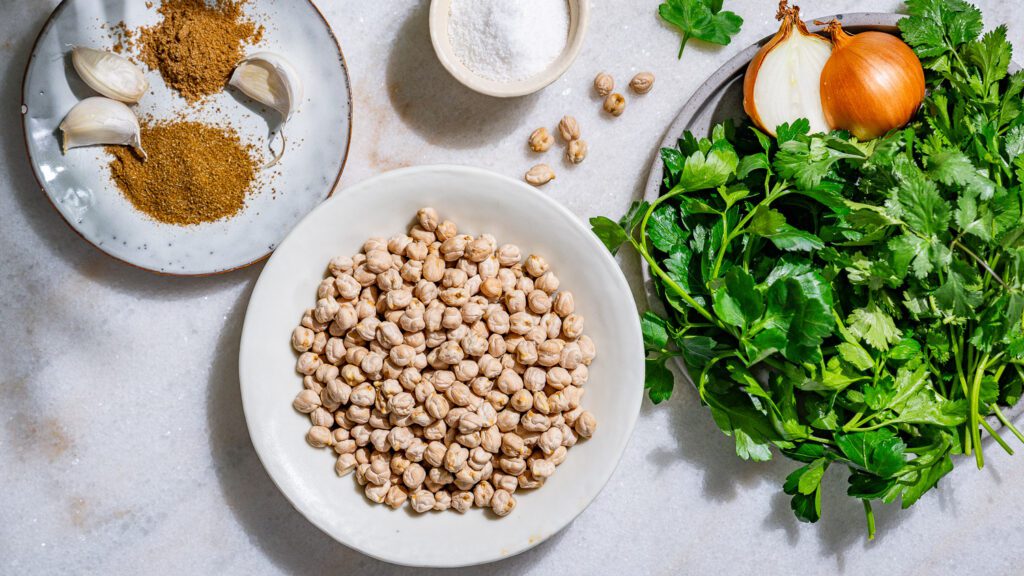
There are also recipes that contain some beans (fava beans) as well as dried chickpeas. And no: turmeric does not belong in falafel.
Don’t use canned chickpeas!
I keep seeing supposedly authentic falafel recipes that use canned chickpeas, i.e. pre-cooked chickpeas. You should definitely not do that!
If you use canned chickpeas, you must also use flour or chickpea flour. This will make the falafel mixture soggy, sometimes really lumpy and fall apart when deep-frying.
Believe me, this really makes a big difference to the taste: use dried chickpeas!
Use dried chickpeas for the best falafel!
If you want great and truly authentic falafel that won’t fall apart, use dried chickpeas instead.
Soak them in fresh water for at least 12 hours beforehand. You don’t need to cook them afterwards. You can then use them raw with the other ingredients.

Should you use baking powder for the falafel mixture?
You can, but you don’t have to. There are one or two falafel recipes in which a little baking powder is mixed into the falafel batter. You can do this if you want your chickpea balls to rise a little.
This will make them a little fluffier. However, you then run the risk of the falafel balls crumbling during frying. I usually prefer to leave out the baking powder or use very little of it.
How to prepare falafel perfectly
The preparation of falafel can be divided into two main stages: preparing the chickpea mixture and shaping and frying the falafel balls.

Preparing the falafel mixture is actually very quick and easy. You need to soak the dried chickpeas in fresh water for at least 12 hours. I always do this before I go to bed and can then use them straight away at lunchtime.
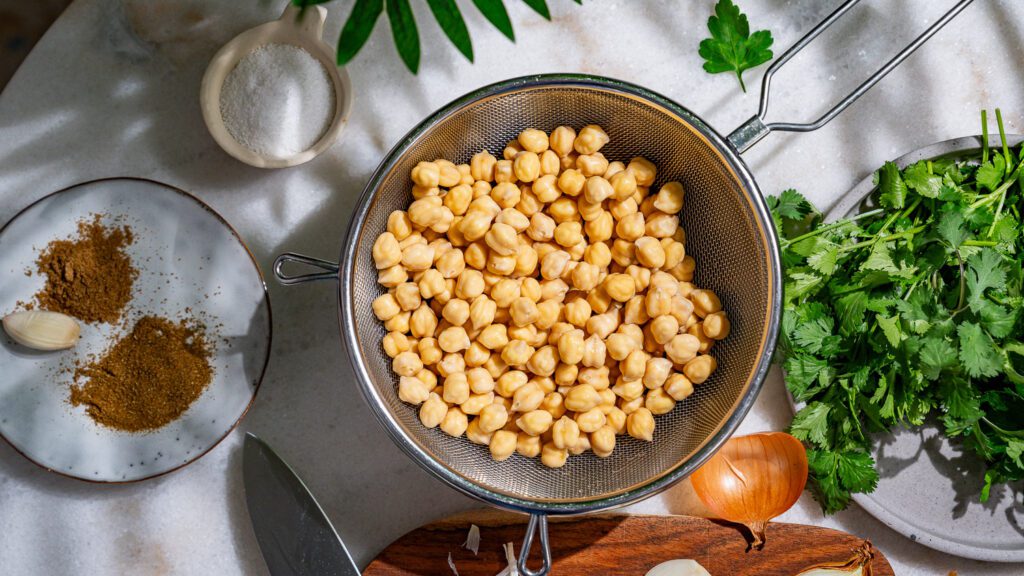
After soaking, you can either pass the raw chickpeas directly through a mincer with onion, garlic and flat-leaf parsley (which is how my parents used to do it) or chop them up in a food processor.
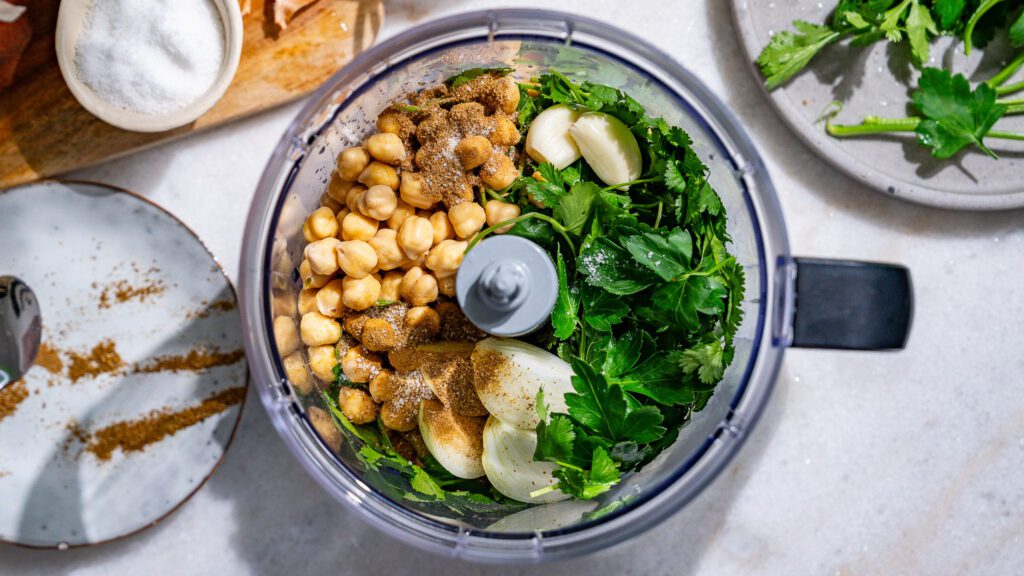
In my experience, a powerful hand blender is usually even quicker than a large blender. So you don’t necessarily need a large food processor to make falafel.
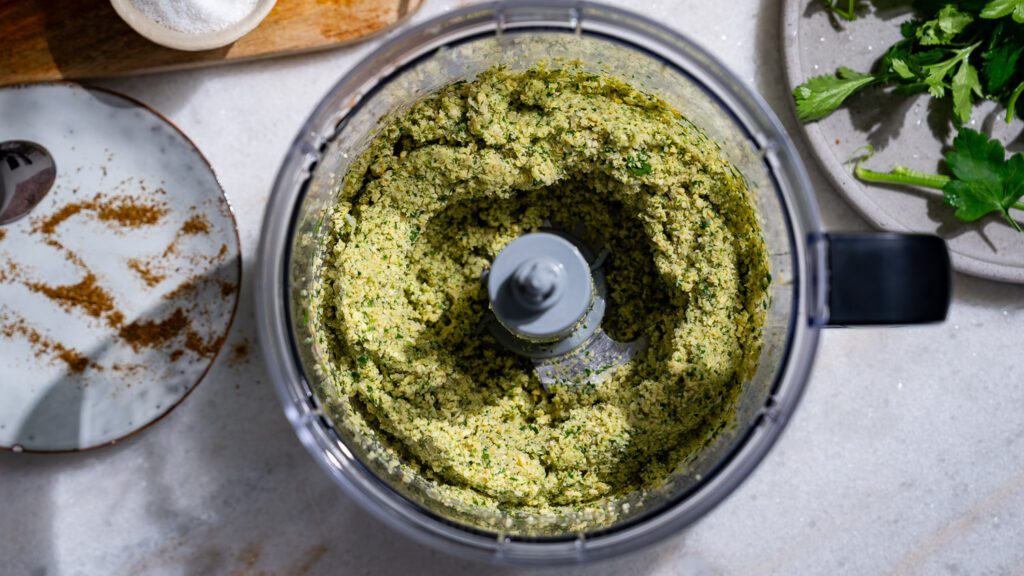
I then leave the falafel mixture in the fridge for about an hour to improve the starch binding and malleability. This step is important as it helps the balls to keep their shape when deep-frying.
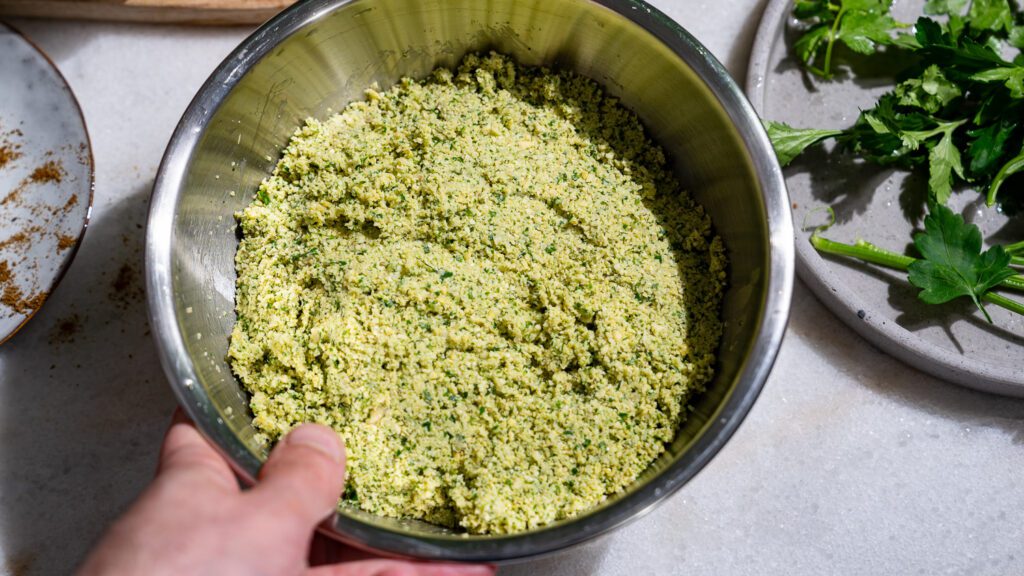
After the dough has rested sufficiently, I would knead everything briefly and then you can start shaping the falafel balls.
Shaping falafel balls – this is how it works
The falafel mixture must keep its shape when pressed together, but may still be a little crumbly. Shaping the balls is really child’s play.

You can either shape them with wet hands, an ice cream scoop, spoons or a traditional falafel shaper. You can get this traditional thing either online or in oriental supermarkets.
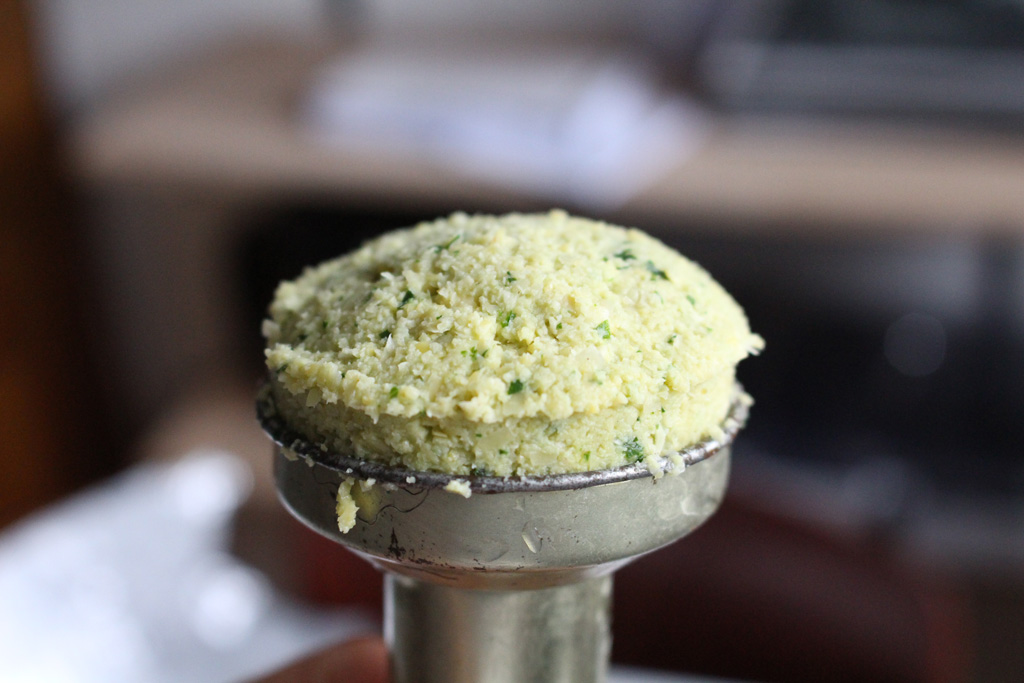
Shape the entire dough into small balls and then you can start frying.
Deep-frying falafel in oil, baking or in the air fryer?
After shaping, the balls can be placed in hot oil and fried on all sides in a deep fryer, pan or deep frying pan until golden brown.
To say one thing straight away: I simply like deep-fried falafel best!
The oil should have a temperature of approx. 170°C – 180°C. I can highly recommend a deep fryer with a thermostat for this. That way you can control the temperature better.
If the oil is too hot, the falafel will darken too quickly on the outside and would still be raw on the inside. And if the oil is not hot enough, the balls would become too saturated with oil or even fall apart.
The preparation time in hot oil is around 3 minutes. The perfect falafel is golden brown in color.
You can also prepare the balls in a hot air fryer or in the oven. Please note, however, that different temperatures and preparation times are required here. You can find my recipe for falafel from the air fryer here.
Falafel are super crispy on the outside and wonderfully tender and juicy on the inside. The fresh herbs give them their beautiful green color on the inside.
If you get them from the supermarket or takeaway and they are yellow on the inside, you haven’t got good chickpea balls.
Serving and eating falafel
I personally also like fresh falafel on its own. I like to crisp them up straight after frying. But even better are falafel for dipping with tahini sauce.
Falafel are usually always part of a mezze. This is a kind of tapas where many other delicious small dishes and salads come together and are enjoyed throughout the evening. Falafel is therefore an excellent accompaniment:
But the absolute classic is the falafel wrap! If you wrap falafel in thin flatbread or put it in a pita, then press the balls first.
You can really squeeze them, as the balls will then absorb the sauce much better. This will make your wrap really juicy, crispy and delicious.
Incidentally, homemade falafel can be kept in the fridge for up to 5 days after preparation. But what if you’ve really made too much?
You can reheat falafel
Personally, I always eat falafel fresh. If you have some left over and want to eat them the next day, I would definitely heat them up again briefly in the oven or deep fryer, otherwise they will taste a little dry.
When it comes to reheating the balls, there are various methods:
- You can bake them in the oven at 180 °C for around 8-10 minutes to make them crispy again.
- Alternatively, you can also reheat them in a hot air fryer at 190°C for a few minutes.
- Another option, apart from the deep fryer, is to heat the falafel in a pan with a little oil.
Freezing falafel is no problem
You can also freeze the cooled falafel for later use. To do this, you should allow the deep-fried falafel balls to cool thoroughly and then place them next to each other on a large plate in the freezer for approx. 1 hour.
You should do this “pre-freezing” so that the falafel don’t stick together later in the freezer bag. After the hour, the chickpea balls will be hard and can be frozen in a freezer bag or box for up to 6 months.
You don’t necessarily have to defrost frozen falafel. They can be taken straight from the freezer and placed in a deep fryer, preheated oven or hot air fryer. This way, they retain their crispy texture and delicious aroma.
Oven vs. hot air fryer
If you don’t like deep-frying, don’t worry! There are alternatives to hot oil. Falafel could also be prepared in the oven or in a hot air fryer.
The hot air fryer offers a crispy texture with less oil consumption. I have developed a special recipe for this and found the perfect balance between temperature, cooking time and size of the falafel. you can find the recipe here.
If you want to prepare falafel in the oven, you can brush them with olive oil and then bake them. However, I can tell you straight away that you won’t necessarily get the best falafel in the oven. They won’t be as crispy and will be rather dry.
Are the chickpea balls healthy?
Falafel are purely plant-based, i.e. vegan, and contain a lot of protein as well as plenty of fiber and are gluten-free.
Falafel is also full of good B vitamins and minerals such as iron, magnesium and phosphorus.
But that’s not all. Falafel offer health benefits due to their antioxidant flavonoids, are cholesterol-free and are also an excellent source of folic acid.
They contain important trace elements and can also protect the cardiovascular system thanks to the saponins they contain.
Falafel for children
I personally always had a falafel in my mother’s mouth instead of a nibble – joking aside: children love falafel. Sometimes you just have to make the crispy balls a little more palatable for them.
A child-friendly dip such as a mild yoghurt sauce can help to encourage kids to try them. You can also vary the size of the balls.
Mini falafel balls, for example, are a good size for children’s hands and can make eating easier for the little ones. Then the shared crunching can begin straight away.
Conclusion
Making authentic falafel yourself is really easy! You don’t need many ingredients. What’s more, you can get every ingredient in almost any supermarket or online. The preparation is very simple and the most important thing is: they are absolutely delicious! Enjoy your meal!
Recipe for authentic falafel
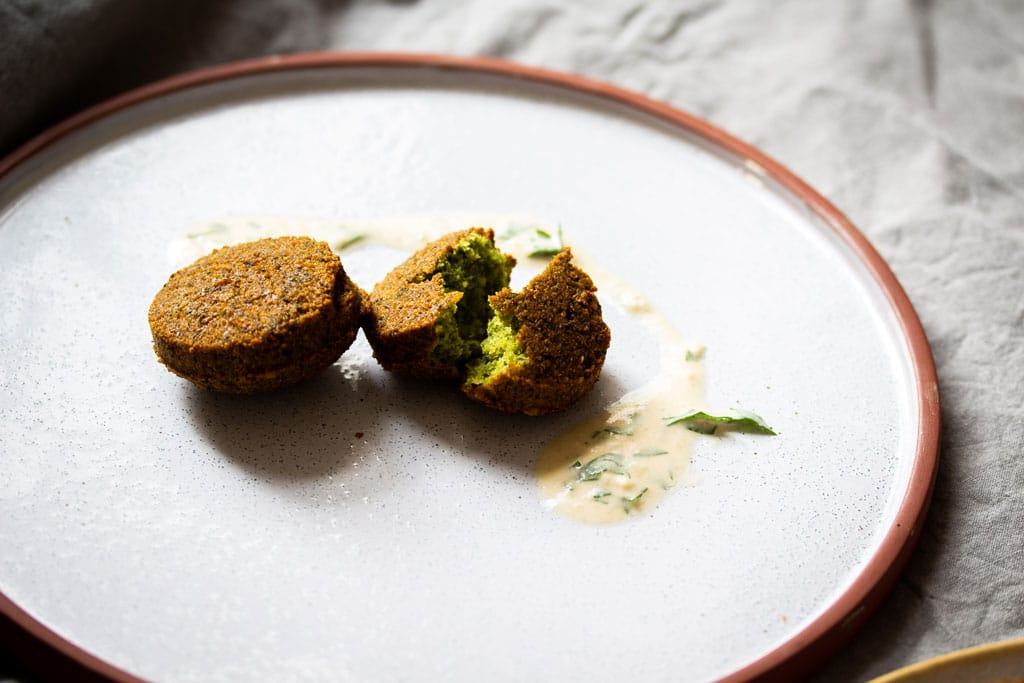
Ingredients
- 250 g dried chickpeas
- 2 Garlic cloves
- 1 Onion
- 15 g Coriander fresh
- 20 g flat leaf parsley
- 2 TSP Cumin (Kreuzkümmel)
- 1 TSP Coriander seeds ground
- 1 TSP Salt
- Oil for frying
Zubereitung
- Soak the chickpeas in water overnight. (At least 12 hours)
- Peel the onion and garlic. Cut the onion into quarters.
- Strain the chickpeas in a sieve.
- Blend the chickpeas with the garlic, onion, coriander (fresh and ground), parsley, cumin and salt in a powerful blender until homogeneous. To avoid overloading your food processor, you can also produce the mixture in 2 – 4 parts and mix by hand afterwards.
- Transfer the mixture to a bowl, flatten and place in the fridge for approx. 1 hour to infuse.
- Heat the deep fryer or a pot with the oil.
- Now shape the mixture with a falafel scoop and place it in the hot oil. If you don't have a portioner, you can shape the mixture with spoons or your hands. The taste remains the same 🙂
- Fry the falafel for approx. 3 minutes until golden brown.
Notes
Nährwerte
You can find all the information about chickpeas in the chickpea guide. Falafel are also available as croutons for salads.
Frequently asked questions
Are falafel healthy?
Falafel are rich in soluble fiber, protein, iron, magnesium and B vitamins, making them a healthy option. They are good for digestion, intestinal health and keep you full for a long time.
In which countries do people eat falafel?
Falafel is eaten in countries such as Israel, Palestine, Lebanon, Syria, Egypt and Sudan. It is a popular traditional dish that is widespread throughout the Middle Eastern region.
Is falafel cold or warm?
Falafel can be eaten both hot and cold. However, they are most delicious freshly fried. They taste delicious in a flatbread, with a salad or as a side dish. The choice is yours as to how you want to enjoy them!

